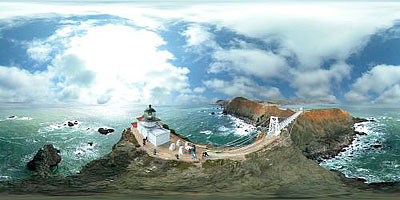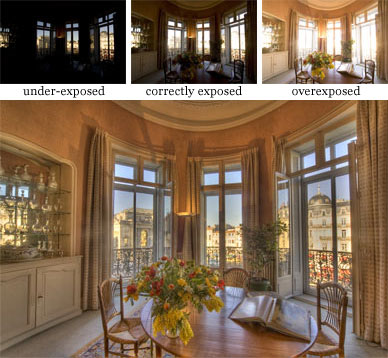
Casio has recently announced its latest compact camera. The EX-Z1000 manages to cram 10 megapixels into a 92 x 58 x 22mm case (think of an inch-thick credit card).
Along with the usual slew of features and special effects, there is one option called 'best shot', takes a 3 megapixel shot of the area you are focussing on, while simultaneously recording a 10 megapixel image of this area, plus the area surrounding it. This is designed for people who have a tendency for 'chopping' the heads off people, or steeples off churches, allowing them to re-crop the picture in image-editing software later on.

Now, this made me think about my recent blog about Stephen Wiltshire, and a less-recent one about aerial panoramas. Stephen remembers every detail of the scenes he looks at, and is able to 'stitch' them back together again later. What if the cameras of the future had a lens apparatus that took a gigapixel picture similar to these panoramic pictures.
Of course, getting the lens 100-feet in the air might be a problem, so maybe we'll have to settle for a 360-degree horizontal view (cue a new 'hold mobile phone above head when taking shots' craze).

You could then browse through the 'flattened' picture at your leisure, and choose the portion(s) you wanted.

And why not throw in an HDR imaging system? This takes three identically framed pictures, one under-exposed, one correctly exposed, and one over-exposed, then blends them together in software to create a picture with far more detail than would be possible using conventional photographic methods.

Now, I can already hear howls of protest from 'proper' photographers saying that it takes all the skill out of photography. However, people will still need to choose the 'best bits'... and the HDR method can lead to bland and uninteresting images without the right 'eye' to decide how much light and shade to mix in.
There was a time when only someone with photographic equipment worth tens of thousands of pounds could take professional-looking images. Now someone with a camera costing under £500 can record an image good enough to grace the cover of a glossy magazine.
Is this a good or bad thing? Discuss.
------------

6 comments:
Good thing.
Not every "proper" photographer is in the right place, at the right time, with the right equipment, or the right settings to get a perfect picture.
So instead of having specialist photographers trained to switch camera settings in the blink of an eye, get a camera that takes all kinds of images with one press, allowing those that are in the right place at the right time to take the right picture.
Of course, this destroys photography as a career, and skill, and art form, but sacrifices must be made to progress further. And who knows, maybe "proper" photography will spawn further from that, allowing even higher levels of elitism.
I would think this would open up Photography as a career to even more people, just not as well paid as many of the top photographers at the moment.
What it does is puts even more emphasis on the creative side of the photographer - different angles and right place right time. After that it is onto the skills of the user in photo manipulation programs such as Photoshop.
Surely the next step needs to be a camera that can act as a kite as in one of your previous blogs - so that we can get true aerial shots! In fact, maybe a camera with its own engine and wings and and...
Interesting and in the same vein, there's research going on into cameras that can be focussed after a shot's been taken. More info here.
Sorry, have to disagree with the above comments. Assistance is good, taking the picture for you and pre-empting every mistake that the silly human holding the camera might make isn't. This sits next to F1 cars not needing drivers etc, etc… Let's not remove all of the qualities that a human brings to the equation, good and bad, mistakes can give birth to the greatest creations.
I have to agree with aaron butler.
This sounds like the photographic equivalent of "if a million monkeys typed on a million type writers for a million years they would produce the collected works of Shakespeare." They wouldn't.
Its the photographer's intent (and sometimes the unintentional consequences of that intent) that makes photography what it is. No amount of panoramic or take a million shots, and crop of choose what we like can duplicate intent. Moreover, if you think about the technical difficulties this would entail, getting the right expousre all 360 degrees. And what about things like depth fo field, angle of view, the effect of focal length, etc. etc. etc. that a good photographer carefully selects in order to get just the right effect.
As for the HDR concept, it is already here now. It's called automatic exposure bracketing (which even some of the lower end cameras have), and photoshop.
tman, i think you've hit the nail on the head with the 'monkeys/typewriters' thing.
Post a Comment